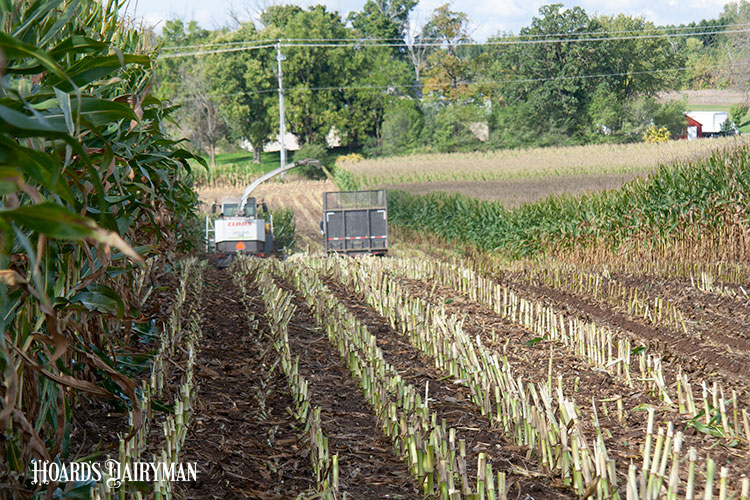
Raising cutting height when harvesting corn for silage is sometimes recommended to improve the quality of the silage. Like how we can see a glass of water half empty or half full, cutting height can be evaluated from two perspectives, which I like to call the “positive selection” and the “negative selection” viewpoints. Positive selection means we’re raising cutting height to increase the proportion of grain in the silage. Negative selection leads us to raise the cutting height to reduce the proportion of stems in the silage. Both perspectives synergize in the attempt to improve the concentration of digestible energy of the silage.
Even though the principle of raising cutting height makes sense, the negative selection perspective of less stems could be challenged, especially under the current scenario that includes drought stress and high feed costs.
Greater quantity with similar quality
According to Penn State Extension, dry matter yield is about 7.5% less when corn is harvested at a higher height than when harvested at a lower height. If we consider a milking cow consuming 22 pounds of corn silage per day (dry matter basis), then a reduction of dry matter yield from 8.1 tons per acre to 7.5 tons per acre implies that 55 cow days per acre are being left in the field. These days, when every pound of dry matter is so valuable, harvesting those extra pounds can be much more important than getting a bit of extra silage quality.
We know that the lower portion of the stalk has the worst quality, but do we really know how bad the quality is? In a study from our laboratory, we measured the neutral detergent fiber (NDF) concentration and the in vitro NDF digestibility of the first internode above the nodal roots (lower height), the third internode above the nodal roots (upper height), and the first internode above the insertion of the ear of corn plants. Interestingly, the NDF concentration ranged only from 48.8% to 50.1%, showing that tissue composition is not extremely different at different heights.
Regarding NDF digestibility, the lower height internode had an NDF digestibility (NDF-basis) of 46.6%, the upper height internode had an NDF digestibility of 50.9%, and the internode above the ear had an NDF digestibility of 55.4%. It is worth highlighting that the NDF digestibility of the lower and upper internodes differed by 4.3 percentage units, which is a high difference but not extreme.
What is left in the field by raising cutting height is poorer quality, there are no doubts about that. However, that material is not much different than what is harvested either way. Therefore, in this challenging scenario of drought and high feed costs, would it not be a good idea to harvest as much biomass as possible despite the sacrifice in quality? We cannot let perfect be the enemy of good.








